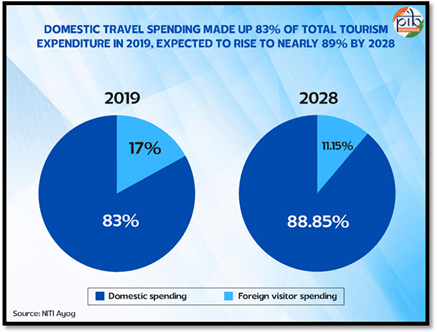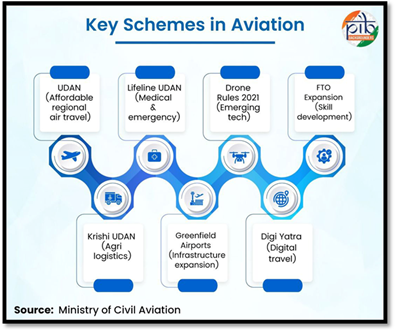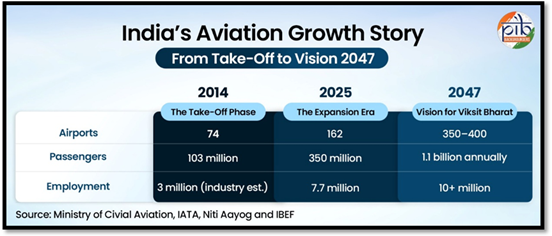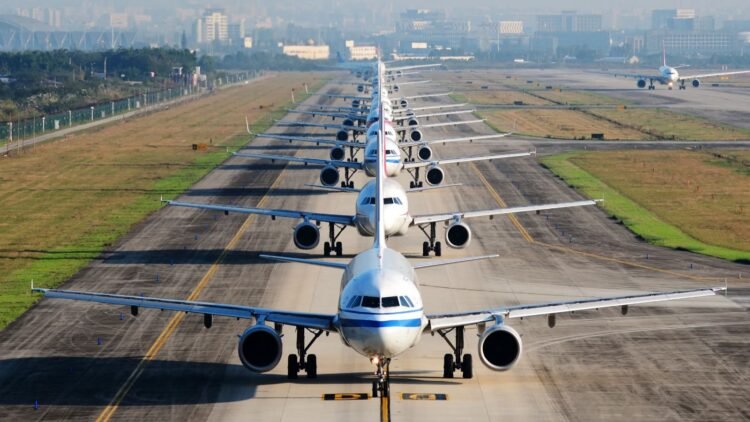India’s Aviation Boom: From 163 Airports to 400 by 2047 – UDAN Fuels 25M Jobs & 1.1B Passengers in Skyrocketing Economy!
With drone manufacturing and pilot training, aviation will become a vital pillar of India’s $10 trillion economy.
In the vast expanse of India’s skies, a revolution is underway—one that promises to knit the nation’s diverse tapestry closer together while propelling its economy to unprecedented heights. As the Regional Connectivity Scheme-UDAN (Ude Desh ka Aam Nagrik) marks its ninth anniversary today, the civil aviation sector stands as a testament to visionary governance and relentless innovation. From humble beginnings in 2016, UDAN has democratized air travel, transforming remote hamlets into bustling hubs of opportunity. This article delves into 10 must-know facts that illuminate India’s aviation odyssey toward Viksit Bharat @2047—a developed nation soaring on wings of inclusivity, sustainability, and growth.
1. UDAN’s Transformative Impact
Bridging the Skies for Millions
Launched on October 21, 2016, by the Ministry of Civil Aviation (MoCA), UDAN was more than a scheme; it was a pledge to the common citizen. Over nine years, it has operationalized 649 routes, connecting 93 aerodromes—including two water aerodromes and 15 heliports—across the country. Notably, 12 such facilities dot the North-East, while the Andaman & Nicobar and Lakshadweep Islands are now woven into the national aviation fabric. The numbers speak volumes: over 1.56 crore passengers have winged their way on 3.23 lakh flights, fostering tourism in once-isolated gems like Kullu, Darbhanga, Hubballi, and Shillong. According to NITI Aayog, domestic travelers already account for 83% of tourism spending, a figure poised to climb to 89% by 2028. UDAN’s Viability Gap Funding (VGF) of ₹4,300 crore has been the financial lifeline, ensuring airlines can sustain these routes profitably. Looking ahead, the scheme eyes 120 new destinations, targeting 4 crore passengers in the next decade, with a focus on hilly, aspirational, and North-Eastern districts.
2. Airport Expansion Milestone
From 74 to 400 in Three Decades
India’s aviation infrastructure has exploded from a modest 74 airports in 2014 to 163 today. This surge underscores the government’s audacious blueprint: scaling to 350-400 airports by 2047, the centenary of independence. The Greenfield Airports Policy is the architect here, enabling public-private partnerships to erect facilities on virgin land, decongesting metros and unlocking regional potential. Imagine: every corner of India, from the Thar Desert to the Himalayan foothills, accessible by air. This expansion isn’t just bricks and runways; it’s a catalyst for balanced growth, reducing reliance on external markets and amplifying trade in emergencies.

3. Job Creation Powerhouse
7.7 Million Today, 25 Million Tomorrow
Aviation isn’t flying solo—it’s a jobs juggernaut. Currently, it sustains 7.7 million indirect jobs and 369,000 direct ones, spanning pilots, engineers, ground crew, and logistics whizzes. The International Civil Aviation Organization (ICAO) highlights the sector’s multiplier magic: every rupee invested yields over three times in economic activity and six times in jobs. By 2040, projections soar to 25 million employments, a core engine for India’s $10 trillion economy dream. Demand for skilled talent is skyrocketing, with initiatives like expanded Flight Training Organizations (FTOs) and commercial pilot licensing gearing up for 30,000-34,000 new aviators in the next 10-15 years. Gender parity gets a boost too: with 13-18% women pilots now, the Directorate General of Civil Aviation (DGCA) aims for 25% female representation across roles by 2025.
4. Third-Largest Domestic Market
A Global Contender
India has vaulted to the world’s third-largest domestic aviation market, outpacing giants with 10-12% annual passenger growth. Domestic air traffic, the lifeblood of tourism and trade, is set to balloon six-fold to 1.1 billion by 2040. Over 116 bilateral Air Service Agreements are deepening global ties, as Indian carriers stretch their wings internationally, cementing Asia’s aviation hub status.

5. Fleet Growth Projection
Doubling Down on Capacity
The commercial fleet has more than quadrupled from 400 aircraft in 2014 to a staggering 2,359 by March 2040. This armada will ferry dreams and cargo alike, bolstered by Foreign Direct Investment (FDI), technology transfers, and Make in India thrusts in manufacturing, ground handling, and Maintenance, Repair, and Operations (MRO).
6. Viability Gap Funding Boost
Sustainability in the Stratosphere
UDAN’s ₹4,300 crore VGF isn’t charity—it’s smart economics. It has rendered regional routes viable, injecting life into local economies. The UDAN Yatri Café, piloted at Kolkata and Chennai airports, epitomizes inclusivity: tea for ₹10, samosas for ₹20, ensuring even budget travelers dine with dignity.

7. Digi Yatra’s Digital Leap
Frictionless Journeys
Since 2022, Digi Yatra has ushered in a paperless era with facial recognition tech. By March 2025, 52.2 million passengers have zipped through airports contactlessly, backed by a 12.1 million-download app on Android and iOS. It’s not just faster—it’s fairer, slashing wait times and enhancing security.
8. Krishi UDAN for Agri-Exports
Farm to Fork by Air
Debuting in September 2020, Krishi UDAN turbocharges agricultural logistics with 50% freight subsidies under Operation Greens. Perishables from tribal and North-Eastern farms now reach markets swiftly, covering horticulture and allied produce via multimodal options. It’s a boon for farmers, curbing waste and amplifying exports.
9. Lifeline UDAN in Crises
Wings of Resilience
In March 2020’s COVID lockdown, Lifeline UDAN proved aviation’s humanitarian heft: 588 flights hauled 1,000 tons of essentials over 5.45 lakh km. It airlifted medical teams, established COVID labs, and responded to disasters like the Visakhapatnam gas leak, prioritizing the North-East, islands, and hills.
10. Drone and Pilot Power-Up
Innovating for the Future
The Drone Rules 2021 have unshackled commercial drone use, paired with a Production-Linked Incentive (PLI) scheme disbursing ₹34.79 crore in FY 2024-25 to foster domestic manufacturing and slash imports. Complementing this, Bharatiya Vayuyan Adhiniyam, 2024, modernizes regulations, aligning with ICAO standards and Chicago Convention for indigenous growth under Atmanirbhar Bharat.
As India hurtles toward 2047, its aviation sector—fueled by UDAN’s grit and green tech like cleaner fuels and digital airways—embodies inclusive mobility. Passenger traffic will eclipse one billion, jobs will multiply, and skies will symbolize a thriving, connected Viksit Bharat. The message is clear: when skies soar, so does the nation. Buckle up—India’s aviation renaissance is just getting airborne.
Terms & Conditions: India CSR does not permit other Websites/agencies to copy or reproduce, or reprint the above article/feature in any form or means.









